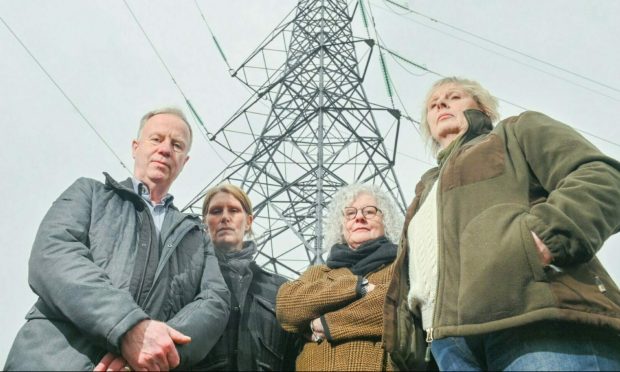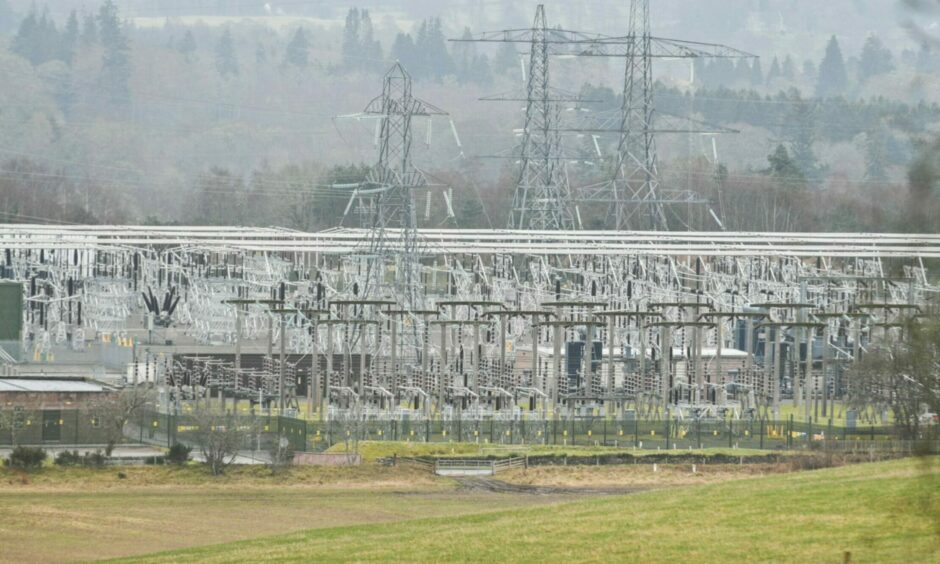Campaigners have stepped up their fight to try to stop a new power line they say will threaten historical, archaeological and conservation sites.
Protest groups in the Highlands are joining forces against the plans and say they are ready to mount legal and planning challenges.
One opponent has compared the situation to the Highland Clearances, claiming it appears money is more important than communities.
What are the SSEN plans?
SSEN plans to route a new 400KV overhead line between Spittal in Caithness and Beauly.
It is part of a proposed £7 billion network upgrade to connect renewables projects and support the drive towards net zero.
It also includes a new transmission line from Beauly to Peterhead and three new substations for Beauly, Spittal and Loch Buidhe, in Sutherland.
The plans prompted the formation of a new campaign group, Communities B4 Power Companies, by residents near Beauly.
It fears the “industrialisation” of communities around Beauly where a converter station is also proposed to connect to cables from the Western Isles.
Another group is campaigning against the plans affecting Strathpeffer and Contin.
And the owner of Carbisdale Castle in Sutherland is considering legal action to stop the plan she says threatens a £10 million renovation of the landmark.
A meeting to launch a Highland-wide campaign against the pylon lines is arranged for April 7 in Kiltarlity Village Hall.
SSEN has already extended the consultation period until April 14.
But the protesters want the process re-started with better information and a more inclusive approach.
Local history and archaeology groups along the route have also raised concerns about the potential effect on some sites.
These include the Strathpeffer Conservation Area, the ancient Knockfarrel hill fort, Category A Listed Castle Leod and its woodlands, and the Loch Kinellan crannog.
Clearances sites under threat
Helen Smith of Rowan Tree Consulting, which specialises in tourism and heritage projects in the Highlands, said: “The huge threat to heritage in the Strathpeffer area is repeated right along the route from Caithness to Beauly.
“Every moor, strath and glen the pylons will cross has special sites, some dating back 6,000 years.
“Even if these sites do not end up with huge pylons on top of them, their surrounding landscape will be drastically affected.”
She said places with important historical links to the Clearances are also under threat.
These include the area around Croick Church, where 18 families were evicted in 1845, and Culrain, scene of anti-Clearance riots in 1820.
“Many traditional droving routes will also be scarred.
“This project is putting Highlanders in the same position as indigenous people in other parts of the world who are seeing their precious places industrialised by governments and large companies who only seem to care about achieving profits and targets.
“It’s a bit like the Highland Clearances 200 years ago when making money from the land was seen as being far more important than thinking about the actual communities who were living there.”
Dan Bailey of the Strathpeffer and Contin Better Cable Group, said alternative routes with less impact are possible.
“If only they had asked local experts before attempting to bulldoze through this mad process.
“The more we see of these proposals, and the more we speak to other communities on the proposed routes, the more determined we are to insist that this project is planned properly and that the natural and cultural heritage of the East Highlands is protected.”
Legal and planning challenges possible
Mr Bailey said the group is not against renewable energy. “But SSEN cannot be allowed to ride roughshod over people, wildlife and history.
“This is a huge project with huge implications. We want to see a proper consultation process, with comprehensive research and a genuine willingness to listen to local communities, before any decisions about the final route are taken.
“We are working with other local communities facing the same threats as us, and we are ready to mount legal and planning challenges if necessary.”
SSEN Transmission said the project is in the early stages and no route alignments have been identified yet.
A spokeswoman said in identifying route options it considered many environmental, cultural and built heritage designations having regard to areas rich in cultural heritage.
A spokeswoman said: “During the current consultation process so far, we have been made aware of a number of areas of sensitivity for archaeological and cultural heritage assets along our proposed route options.
“We have recently met with local community heritage and archaeological groups, and we are committed to working alongside these groups to ensure local knowledge is captured as part of our environmental assessment process.
“We welcome further similar feedback from local communities that we can incorporate into our assessments. “
Are you interested in more exclusive and breaking Highland and Islands news from The P&J? If so, why not join our dedicated Facebook page HERE.




Conversation